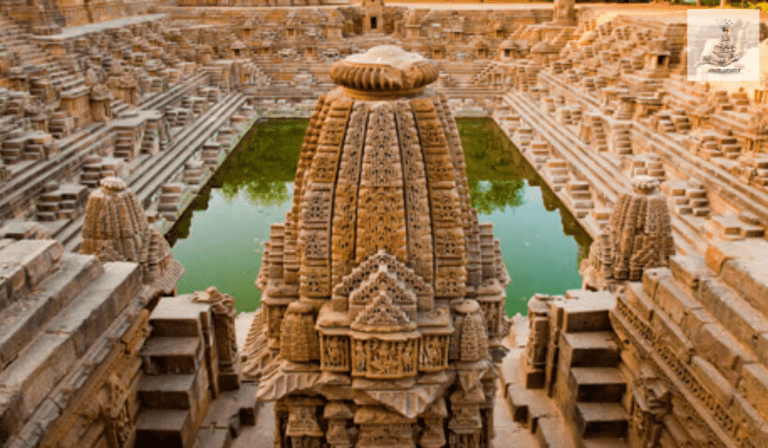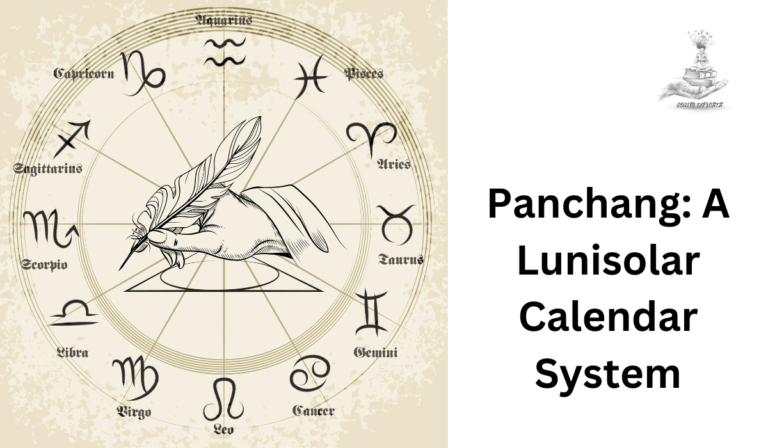Anant Sutra: Republic Day Prade wrapped in Traditional Sarees
At the Republic Day parade at Kartavya Path, where we’re about to witness something truly extraordinary – the ‘Anant Sutra‘ display, a grand showcase of India’s incredible saree heritage. Now, why is this so special? Well, imagine nearly 1,900 sarees from all over India, installed along Kartavya Path.
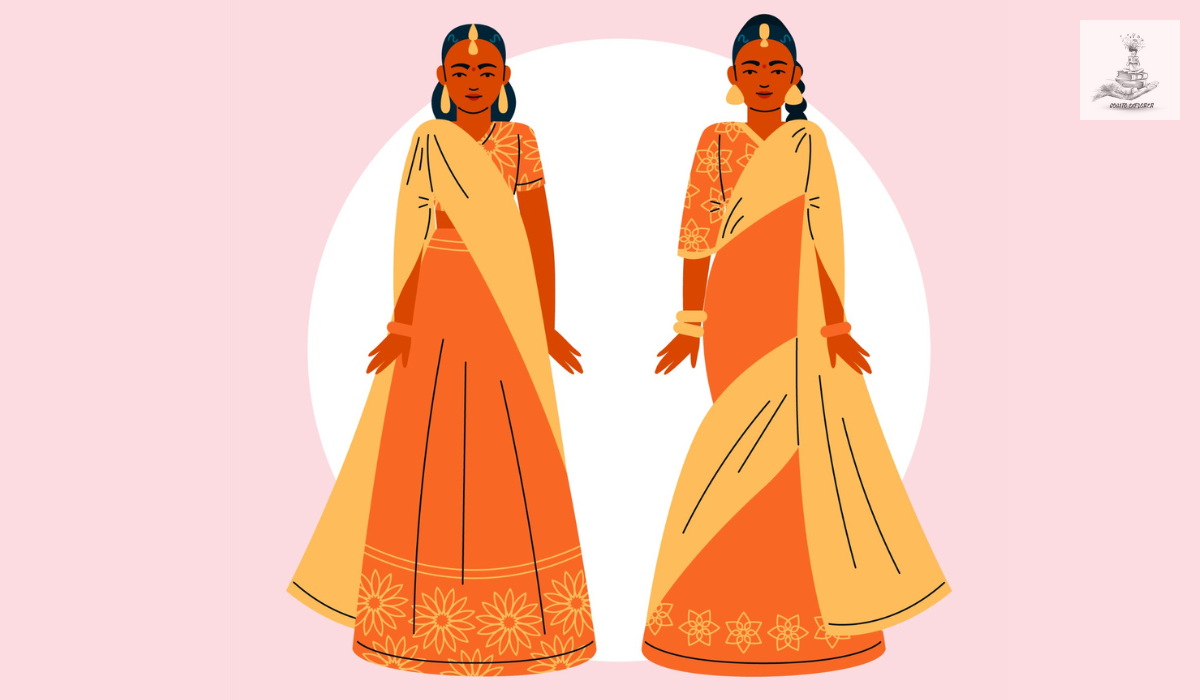
Picture this, wooden frames holding up sarees in a mesmerizing display of colors, textures, and traditions. Each saree has a story to tell, representing different parts of our amazing country. It’s not just about clothing; it’s a nod to India’s diverse textile heritage. Each saree will have a QR code. Scan it, and you’ll dive into the world of weaving and embroidery used in that particular saree. It’s like a mini adventure into the craftsmanship behind these beautiful pieces.
Joint Secretary Amita Prasad Sarbhai says it’s a tribute to the women and weavers of India who’ve handed down their skills through generations. It’s like a living history lesson right there. Meenakshi Lekhi, the Union Minister of State for Culture & External Affairs, had some thoughts on ‘Anant Sutra.’ She said it’s not just a fancy exhibition name. It’s got a deep meaning. According to her, it symbolizes how we, the people of India, have strengthened the thread of national unity and integrity. It’s not just a bunch of sarees on display. It’s a symbol of how we’re all connected, no matter where we’re from.
As we are going to witness The Endless Thread comprising several sorts of sarees we need to understand their local diversity. So greetings to the world of Indian traditional sarees, where every piece tells a story of heritage, craftsmanship, and timeless elegance. In this article, we’ll take you on a journey through the rich tapestry of India’s traditional sarees, exploring their history, diverse styles, and the cultural significance they hold. From the vibrant Banarasis to the delicate Kanjeevarams, each saree is a masterpiece that reflects the artistry of Indian weavers.
Sarees: Regional Varieties
The history of Indian sarees dates back thousands of years, with mentions in ancient texts and sculptures. Sarees have evolved, adapting to regional influences and weaving techniques. In ancient times, women draped themselves in unstitched fabrics, creating a precursor to the modern saree. The transformation from simple attire to intricate, embroidered masterpieces is a testament to the cultural richness of the land. The variety of sarees India boasts beautifully reflects the melting pot of diverse cultures in the country. Let’s take a tour of some of the most renowned regional saree varieties.
Banarasi Sarees:
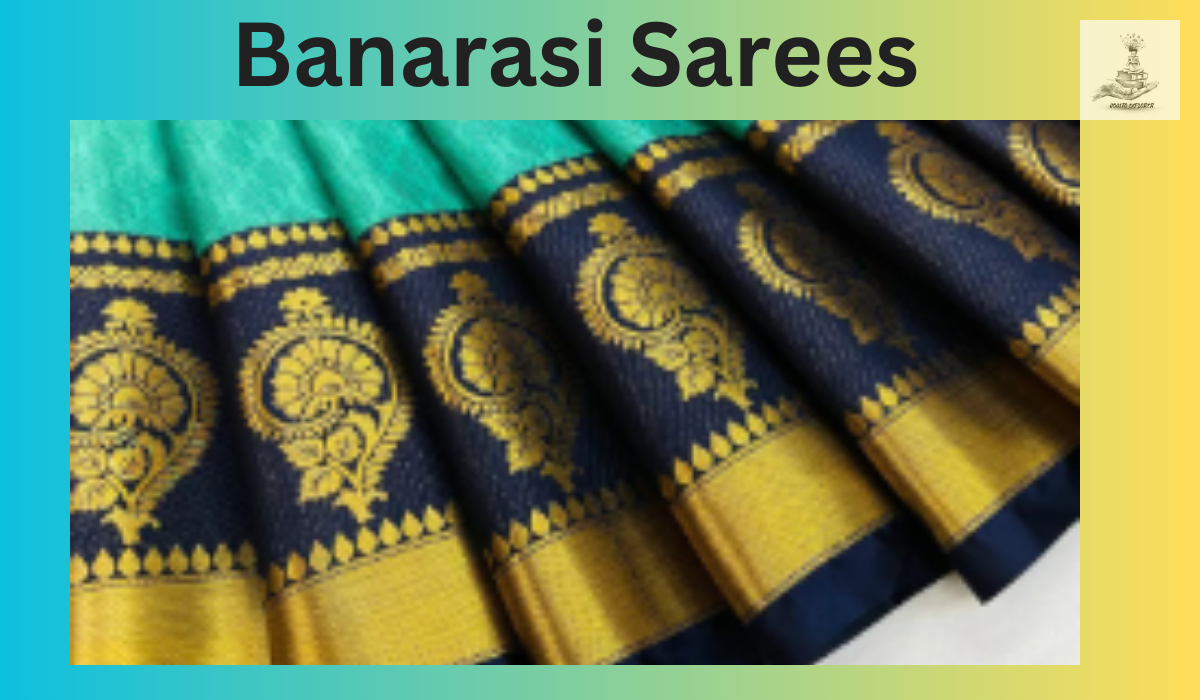
Banarasi sarees, originating from Varanasi, are renowned for their opulent silk fabric, intricate brocade weaving with gold or silver zari, vibrant colors, and traditional motifs such as florals and figurative. The history of Banarasi sarees traces back to the Mughal era, with emperors influencing their development. Over time, they have evolved to incorporate modern elements while preserving traditional weaving techniques. These have received the Geographical Indication (GI) tag, signifying their unique origin. Also globally recognized for their cultural significance and timeless elegance.
Kanjeevaram Sarees:
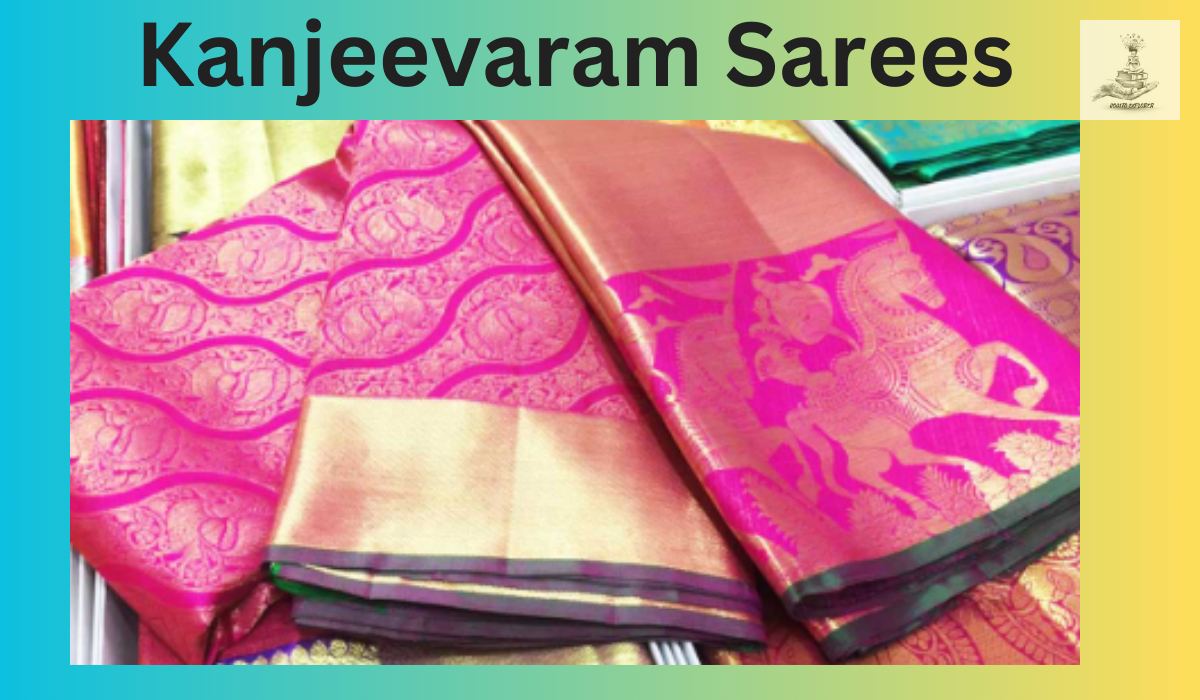
Kanjeevaram sarees, originating from Kanchipuram, Tamil Nadu, are prized for their pure silk fabric, robust weaving techniques, and intricate zari work. Featuring vibrant colors, distinctive borders, and grand pallus, these sarees often showcase traditional temple motifs and patterns. With ancient roots dating back to Vedic times and patronage from the Chola dynasty, Kanjeevaram sarees have a rich history. The unique three-thread weaving technique and wide, contrasting borders make them easily recognizable. Modern adaptations may incorporate contemporary designs. These have received the Geographical Indication (GI) tag, emphasizing their cultural and regional significance.
Paithani Sarees:
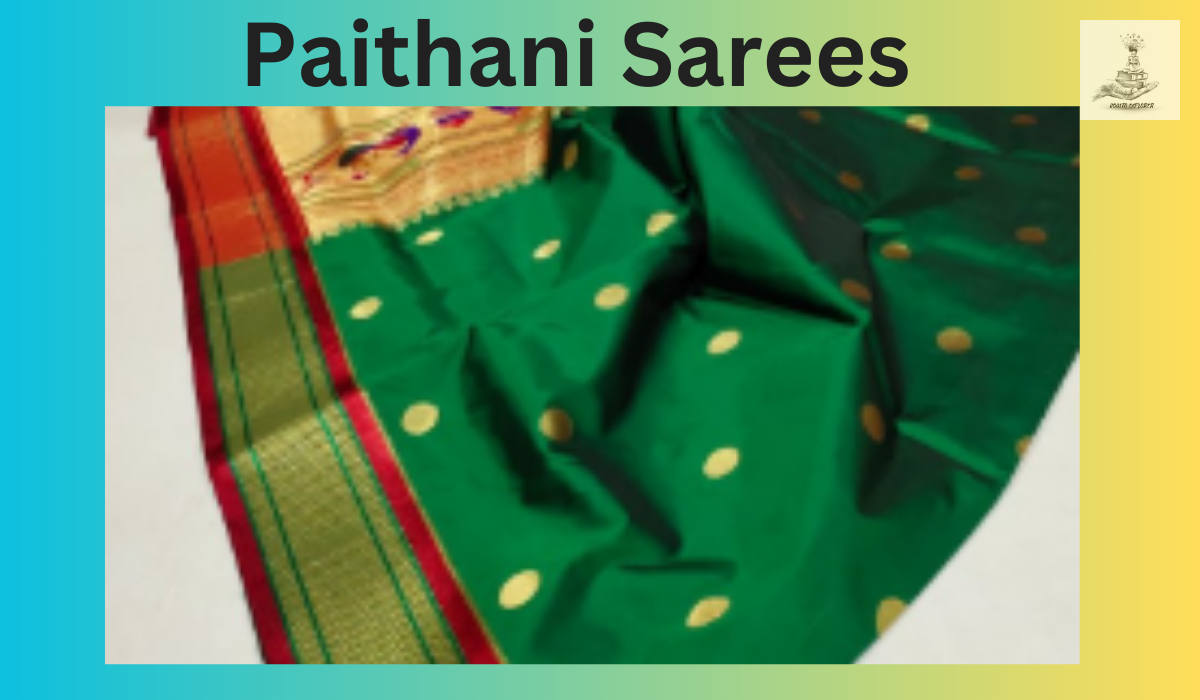
Paithani sarees, originating from Paithan, Maharashtra, are known for their luxurious silk base, intricate zari work, and vibrant colors. Handwoven on traditional looms, these sarees feature distinctive peacock and flower motifs, with a notable “asavali” pattern representing a flowering vine. The use of contrasting colors, detailed borders, and heavily adorned pallus adds to their visual appeal. With roots dating back over two thousand years and patronage from the Maratha rulers, Paithani sarees are deeply embedded in Maharashtrian heritage. They have received the Geographical Indication (GI) tag, underscoring their unique origin and craftsmanship. While maintaining their traditional characteristics, contemporary adaptations may explore variations in colors, motifs, and weaving styles.
Bandhani Sarees:
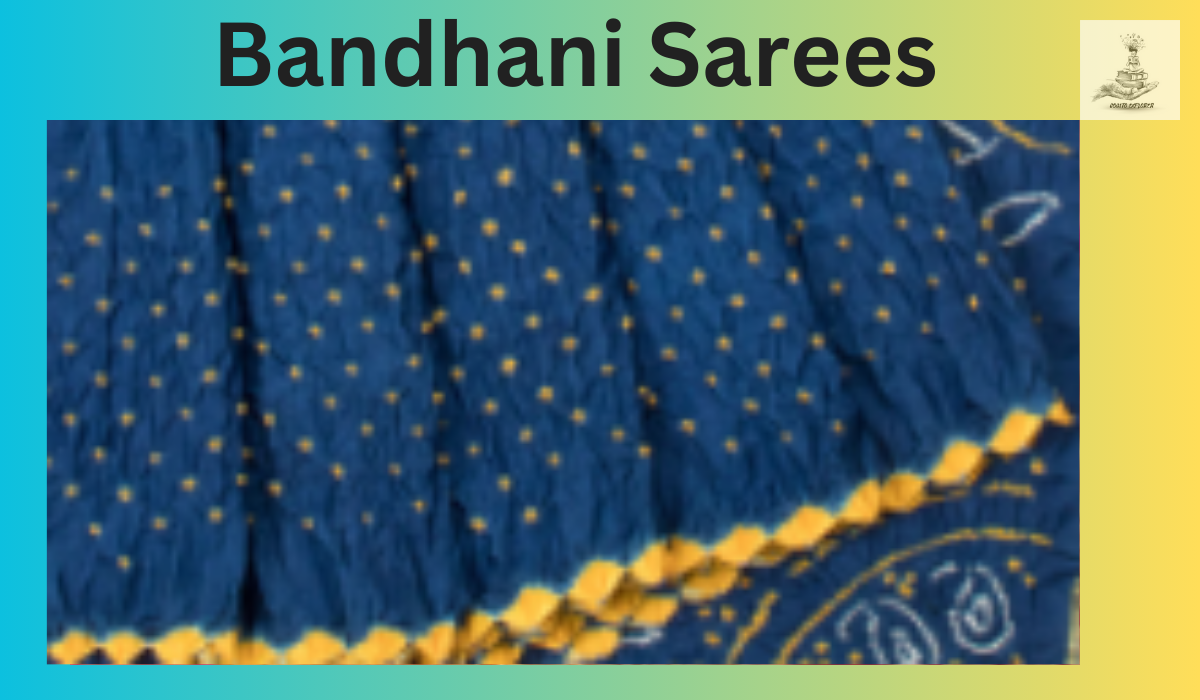
Bandhani sarees are known for their distinctive tie and dye technique, where fabric is tied tightly to create small, evenly spaced dots or circles. Traditionally crafted from natural fabrics like cotton or silk, Bandhani sarees showcase vibrant colors and geometric patterns. The tie and dye process has ancient roots, dating back over 5000 years, and is particularly associated with regions like Gujarat and Rajasthan. Bandhani sarees hold cultural significance, often worn during weddings and festivals. The craft involves meticulous handwork by skilled artisans, and contemporary variations may experiment with colors and fabrics. Globally recognized for their unique craftsmanship. It remain a symbol of traditional Indian textiles, appreciated for their intricate patterns and cultural heritage.
Chikankari Sarees:

Chikankari sarees are characterized by delicate hand embroidery, known as Chikan embroidery, on lightweight fabrics like cotton, muslin, georgette, or silk. Originating in Lucknow, Uttar Pradesh, over 400 years ago, Chikankari gained popularity during the Mughal era with royal patronage. The embroidery often features floral motifs, shadow work, and various flat stitches. Chikankari sarees have a light and airy aesthetic, making them suitable for both casual and formal occasions. The craft experienced a revival in the 20th century, with efforts to preserve and promote it. Today, Chikankari enjoys global recognition, and contemporary designs may incorporate innovative elements while maintaining the traditional elegance of this exquisite embroidery. It remains a symbol of cultural heritage and artistic craftsmanship.
Cultural Significance:
Indian sarees go beyond being just clothing; they are symbols of cultural identity, tradition, and celebrations. Sarees are worn during religious ceremonies (ceremonial sarees), at weddings (weddings sarees), at festivals (festivals sarees), and other significant occasions. Each region has its own set of rituals associated with saree draping, adding a layer of cultural richness to this traditional attire.
The Weaving Process:
Behind every exquisite saree lies the painstaking effort of skilled weavers. The weaving process is a labor of love, involving traditional techniques passed down through generations. From selecting the finest silk or cotton yarn to hand-weaving intricate patterns, the craftsmanship involved in creating a saree is inspiring. Many traditional weaving communities still practice age-old techniques, keeping the art alive.
Modern Trends and Adaptations:
While traditional sarees continue to hold a special place in Indian culture, modern trends have brought about adaptations to cater to changing tastes. Contemporary designers are experimenting with fabrics, colors, and innovative draping styles, creating a fusion of traditional and modern aesthetics. This blend ensures that sarees remain a versatile and timeless fashion choice for women of all ages.
Maintenance and Care:
Caring for a traditional saree is essential to preserve its beauty. Proper storage, gentle cleaning, and avoiding exposure to direct sunlight can extend the life of these exquisite garments. Learning the specific care requirements of each type of saree ensures that one can pass them down as cherished heirlooms.
Conclusion:
In a world that constantly evolves, Indian traditional sarees stand as timeless symbols of elegance and cultural heritage. The intricate craftsmanship, regional diversity, and cultural significance make each saree a work of art. Whether draped for a wedding, festival or a special occasion, the Indian sarees continue to capture hearts with their enduring beauty and grace. So, as you stroll along Kartavya Path, soak in the beauty of those nearly 1,900 sarees, and don’t forget to scan those QR codes for some extra information. ‘Anant Sutra – The Endless Thread’ isn’t just a show; it’s a journey through time, a nod to the weavers, and a big celebration of the incredible tradition that weaves the cultural tapestry of India. Enjoy the parade, everyone! Embrace the legacy, celebrate the diversity, and let the saree weave its magic into the fabric of your life.






